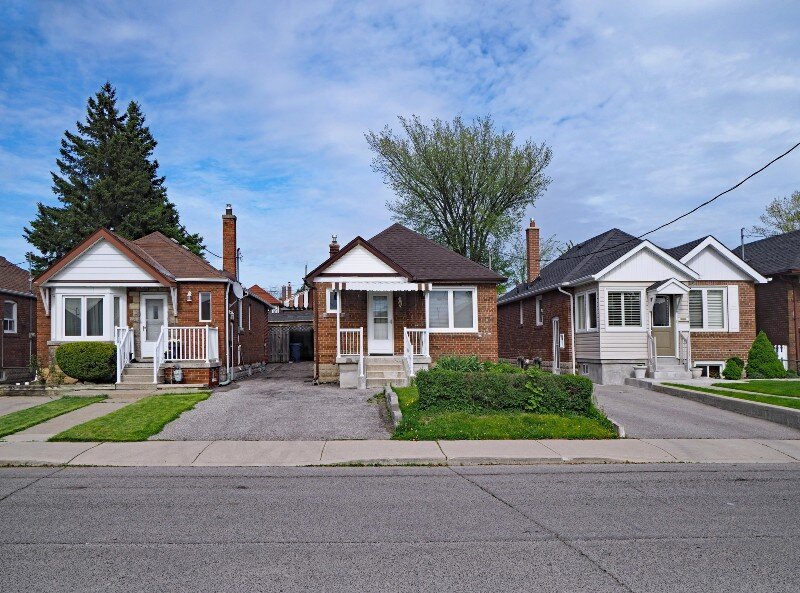
Are you looking to sell a house in Florida, but you’ve had unpermitted work done on the property? If so, the permitting process does allow for a retroactive permit. That permit ensures the renovations are up to the building code.
Here, you will learn how to get unpermitted work permitted in the Sunshine state. We will detail how to get the proper permits for home improvement projects including filling out a permit application and working with a building inspector to have a successful home inspection.
Ready to find out how to get unpermitted work permitted? Let’s get started!
How to Get Unpermitted Work Permitted
When selling a house with unpermitted work, you should first find out how you can get a retroactive building permit for any unpermitted addition that is not up to the current building code or zoning laws.
Homeowners can legalize unpermitted upgrades by retroactively securing the necessary building permits. You may need retroactive permits for certain types of upgrades to prove the contractor completed the work safely.
If your contractor finished the unpermitted construction projects properly, you can likely seek out a retroactive permit. However, for any home improvements or DIY projects that don’t meet building code requirements, you will have to hire a contractor to repair unpermitted construction and meet the codes.
If you’re a recent home buyer who found that the previous owner did not follow permit requirements and completed unpermitted work, you may pursue legal action. You can get a recovery settlement from the prior homeowner or contractor. That is especially important if you’ve bought the home in the past year.
You should conduct some research to find out exactly how you can get a retroactive permit. Ensure all renovations in your home meet permitted work requirements.
Future home sellers will need to pay for engineering or blueprints to showcase the home improvement projects. Then, home sellers will have to present these project drawings to a building official from the municipal building permit office.
However, any DIY work that you’ve completed without professional help or official approval may require you to pay significant fines. When you do file a retroactive permit, you will have to schedule a time and day when an engineer can come to inspect the upgrades.
Any work done on the house that does not align with building code requirements or the engineer finds subpar will need an upgrade. You need to align the new renovations with building permit requirements before the inspector gives out a retroactive permit. All upgrades will then become part of city records.
Retroactive Permitting – What You Need to Know
If the building upgrades meet the local building codes and laws, you can get a retroactive permit relatively easily. You will need to meet all permit requirements to get that retroactive permit.
You can get a building permit application from the relevant municipal office. When seeking out a retroactive permit, provide blueprints for each home improvement project. Next, you’ll need to schedule city inspectors to check out the renovations to ensure they follow city ordinances.
Most home improvement projects that change the footprint of the house need building permits. Even outdoor projects like building a deck or certain types of fencing will require a permit. Plumbing and electrical work also mandate building permits. If you want to add a restroom or another room to the house, you will need to get a permit.
However, if you fail to get permits before starting a project or retroactive permits after the fact, you may have trouble selling your home. Also, remodeling may get delayed.
Yet, more minor repairs do not require a permit, such as:
- Replacing faucets
- Installing new flooring and kitchen countertops
- Painting the inside or outside of the home
A retroactive permit shows how a construction project can meet building codes, which vary between cities. It is usually up to the contractor you hire to know whether a renovation needs a permit. Yet, homeowners need to ensure all remodeling projects get done legally.
It may take up to six weeks for a building inspector to complete the inspections and give you relevant retroactive permits. Also, building permits tend to cost about 1 percent of construction costs. Below, we delve further into legalizing unpermitted work.

Legalizing Unpermitted Work
You will need to follow a few simple steps to legalize your unpermitted work and get a retroactive building permit. These steps include:
- Meeting with planning departments and municipal offices
- Hiring an architect to create blueprints and plans for the renovation
- Submitting an application with the design of the upgrade for review
- Scheduling and holding home inspections with a city inspector
Meeting with Planning Departments
You will need to meet with your city planning office to obtain an application for a retroactive building permit. You should also find out from the planning departments about the cost of the home building permit. These costs tend to range greatly depending on the city the property is in.
Generally, permits cost around $50 for small upgrades and as much as $2,000 or more for complete remodeling projects and room additions. To get approval from the planning departments, you will need to show them the plans and blueprints of the project. Also, a structural engineer should take a look at the plans and approve them.
Using an Architect to Draw Up Plans
You may want to hire a professional architect to draw up the plans for your remodeling project. That’s especially true if you are completely changing the house and adding a second story or building additions to the home.
You may also want to use an architect for drawing up blueprints if you’re completing renovating major systems within the house, such as the electrical, plumbing, or HVAC systems. You will also likely need permits and plans for kitchen remodels or garage conversions.
For major renovations, expect to wait several months before your plans are approved and you get that permit.
Submitting Application for Design Review
Once you have filled out the building permit application and have the building plans or designs completed, it’s time to submit that application to the city planning office for review.
At this point, you can also hire someone to help get that building permit for you. Many cities have complex steps and ongoing communication to get a permit. Hire a professional expediter to complete the process faster, so you can get your permit more quickly. However, you will likely have to pay around $60 per hour for a permit expediter.
Another possibility is to have your contractor submit the permit application and ensure all necessary permits have been obtained.
Holding Home Inspections
The last step involves scheduling home inspections with city planning inspectors and holding these inspections after the renovation is complete. Essentially, the home inspector will need to see how well the project meets building codes and safety standards to approve your retroactive building permit. The inspector will use a home inspection checklist with all permit requirements to see if the home improvement projects align with relevant codes.
However, if the renovation does not meet specific building codes, safety policies, or permit requirements, you will likely need to take down the upgrade and rebuild it all over again.
Cost to Permit a Room Addition after Construction
To get a retroactive building permit after you’ve had a room addition constructed in your home, you will have to pay anywhere from $500 to around $2,000.
Building permit fees can depend on the square footage of the construction project, the amount spent on construction costs, or a flat rate.
Do You Need to get a Permit for your Conversion Before Selling a House?
If you try to sell a house with unpermitted work, you may face financial penalties from the city planning office. Also, you will have to disclose any unpermitted work to potential buyers during the sale. That may make it more difficult to find home buyers or get bids on the house.
As such, you’ll likely need to sell your house in its as-is condition. Getting a permit before a home sale may simplify the home selling process.
Conclusion
After reading through the guide above, you should know exactly how to get unpermitted work permitted. Essentially, you will need to contact your local city planning department and get an application for a retroactive building permit. You will also need to hire an architect to draw up plans for your home improvement project.
Next, you should submit the application of your remodeling or construction design for review. The last part involves holding home inspections via a city inspector.
However, if you don’t have the time to get a retroactive permit, you will need to disclose unpermitted work when selling your home. You will also need to sell your home in its as-is condition due to the unpermitted work. As such, you should contact cash home buyers in Florida.
Those looking to sell a house fast in Orlando would benefit from working with cash buyers who don’t need to wait on mortgage approval. We buy houses Tampa residents adore, so give us a call today!


 Call Us!
Call Us!